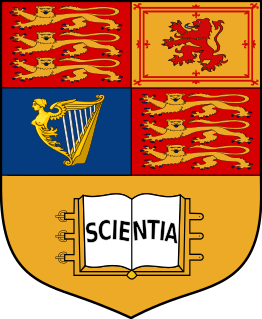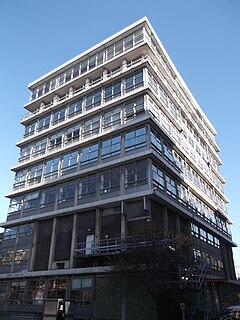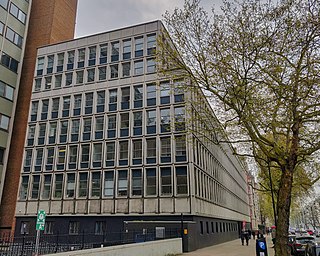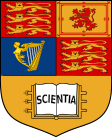
Imperial College London, legally the Imperial College of Science, Technology and Medicine, is a public research university in London. Imperial grew out of Prince Albert's vision for an area of culture, including the Royal Albert Hall, Victoria & Albert Museum, Natural History Museum, and several Royal Colleges. In 1907, Imperial College was established by royal charter, unifying the Royal College of Science, Royal School of Mines, and City and Guilds of London Institute. In 1988, the Imperial College School of Medicine was formed by merging with St Mary's Hospital Medical School. In 2004, Queen Elizabeth II opened the Imperial College Business School.

Istanbul Technical University is an international technical university located in Istanbul, Turkey. It is the world's third-oldest technical university dedicated to engineering sciences as well as social sciences recently, and is one of the most prominent educational institutions in Turkey. ITU is ranked 173rd worldwide in the field of "Engineering & Technology", and 307th worldwide in the field of "Natural Sciences" by the QS World University Rankings in 2016. The university has 99 undergraduate, 192 graduate programs, 14 faculties, labs with total 154,000 m2 area, and 12 research centers. The lecturer / student ratio is 1/25.

Iran University of Science and Technology (IUST) is a research institution and university of engineering and science in Iran. The university is home to 15 faculties offering undergraduate and postgraduate degrees in a wide range of engineering-based subjects as well as maths, physics, and department of foreign languages. In 1995 IUST awarded Iran’s first PhDs in materials, metallurgical and traffic engineering. IUST is the only university in the Middle East which has a school of railway engineering and a school of progress engineering. It is also the only university in Iran which has a school of automotive engineering. There are also 12 research centres, nine centres of excellence and 19 specialised libraries as well as four satellite campuses in other parts of the country. IUST is located on Hengam Street in the Narmak neighborhood in northeast Tehran. IUST and its surrounding communities provide a cultural and recreational environment suited to the work of a major research institution.
Sir Alec Westley Skempton was an English civil engineer internationally recognised, along with Karl Terzaghi, as one of the founding fathers of the engineering discipline of soil mechanics. He established the soil mechanics course at Imperial College London, where the Civil and Environmental Engineering Department's building was renamed after him in 2004, and was knighted in the 2000 New Year Honours for services to engineering. He was also a notable contributor on the history of British civil engineering.
The Doctor of Engineering, or Engineering Doctorate, is a degree awarded on the basis of advanced study and research in engineering and applied sciences. In most countries, it is a terminal research doctorate. A DEng/EngD is equivalent to a PhD in engineering, but different in that it has a solid industrial base and an additional taught element.
Olgierd Cecil Zienkiewicz was a British academic of Polish descent, mathematician, and civil engineer. He was born in Caterham, England. He was one of the early pioneers of the finite element method. Since his first paper in 1947 dealing with numerical approximation to the stress analysis of dams, he published nearly 600 papers and wrote or edited more than 25 books.

The University of Cambridge Department of Engineering is the largest department at the University of Cambridge and one of the leading centres of engineering in the world. The department's aim is to address the world's most pressing challenges with science and technology. To achieve this aim, the department collaborates with other disciplines, institutions, companies and entrepreneurs and adopts an integrated approach to research and teaching.

Khajeh Nasir al-Din Toosi University of Technology (KNTU), also known as K. N. Toosi University of Technology, is a public research university in Tehran, Iran. It is named after medieval Persian scholar Khajeh Nasir Toosi. The university is considered one of the most prestigious institutions of higher education in Iran. Acceptance to the university is highly competitive, entrance to undergraduate and graduate programs typically requires scoring among the top 1% of students in the Iranian University Entrance Exam.

The Department of Engineering Science is the academic department dedicated to teaching and researching engineering at the University of Oxford, which is part of the university's Mathematical, Physical and Life Sciences Division. It is principally located on the triangular plot formed by Banbury Road to the west, Parks Road to the east and Keble Road to the south. The main building is the tall 1960s Thom Building that dominates the local landscape, especially the view from the University Parks to the east. Further lower buildings have been added to the north since then. The department shares buildings with the Department of Materials.
The Faculty of Science and Engineering (FSE) is one of the three faculties that comprise the University of Manchester in northern England. Established in October 2004, the faculty was originally called the Faculty of Engineering and Physical Sciences. It was renamed in 2016, following the abolition of the Faculty of Life Science and the incorporation of some aspects of life sciences into the departments of Chemistry and Earth and Environmental Sciences. It is organised into 2 schools and 9 departments: Chemical Engineering and Analytical Science; Chemistry; Computer Science; Earth and Environmental Sciences; Physics and Astronomy; Electrical & Electronic Engineering; Materials; Mathematics; and Mechanical, Aerospace and Civil Engineering.

Babol Noshirvani University of Technology (BNUT), sometimes also referred to as Noshirvani Institute of Technology or NIT, is a public research university and Institute of Technology in Babol, Mazandaran Province in the north of Iran, 20 km south of the Caspian Sea. The university is an influential center for academic research in Iran, due to which it has been consistently ranked among the top schools in the country. BNUT is currently ranked 1st among all Iranian universities according to Times Higher Education (THE) World University Rankings. THE has also ranked BNUT between 351st and 400th among world universities, 55th among the world's young universities, as well as 43rd among Asian universities.
Satya Atluri is a world-renowned Indian-American engineer, educator, researcher and scientist in aerospace engineering, mechanical engineering and computational sciences, who is currently the Presidential Chair & University Distinguished Professor at Texas Tech University. Since 1966, he made fundamental contributions to the development of finite element methods, boundary element methods, Meshless Local Petrov-Galerkin (MLPG) methods, Fragile Points Methods (FPM), Local Variational Iteration Methods, for general problems of engineering, solid mechanics, fluid dynamics, heat transfer, flexoelectricity, ferromagnetics, gradient and nonlocal theories, nonlinear dynamics, shell theories, micromechanics of materials, structural integrity and damage tolerance, Orbital mechanics, Astrodynamics, etc.
The Irwin and Joan Jacobs School of Engineering is an undergraduate and graduate-level engineering school offering BS, BA, MEng, MS, MAS and PhD degrees at the University of California, San Diego in San Diego, California. The Jacobs School of Engineering is the youngest engineering school of the nation's top ten, the largest by enrollment in the University of California system, as well as the largest engineering school on the West Coast and the ninth-largest in the country. More than thirty faculty have been named members of the National Academies. The current dean of the Jacobs School of Engineering is Albert P. Pisano. The Jacobs School of Engineering sends a monthly news email which anyone can subscribe to.
Anthony Glyn Evans was Alcoa Professor of Materials, professor of Mechanical Engineering, director of the Center for Multifunctional Materials and Structures and co-director for the Center for Collaborative Engineering Research and Education at the University of California, Santa Barbara, United States.

The Faculty of Engineering is the engineering school of Imperial College London, and one of the three main faculties the college. It was formed in 2001 from the former City and Guilds College and the Royal School of Mines—two of the three original constituent colleges of Imperial College when the latter was formed in 1907. The faculty is located at Imperial's main South Kensington campus, where teaching and research take place.

The Department of Civil and Environmental Engineering is the academic department at Imperial College London dedicated to civil engineering. It is located at the South Kensington Campus in London, along Imperial College Road. The department is currently a part of the college's Faculty of Engineering, which was formed in 2001 when Imperial College restructured. The department has consistently ranked within the top five on the QS World University Rankings in recent years.
The A. A. Griffith Medal and Prize is awarded annually by the Institute of Materials, Minerals and Mining in commemoration of Alan Arnold Griffith.

The Department of Chemical Engineering, Imperial College London is the centre of teaching and research in chemical and process engineering at Imperial College London, occupying the Aeronautics and Chemical Engineering Extension (ACEX), Bone and Roderic Hill buildings, on the South Kensington campus. Formally inaugurated in 1912, the department has over 40 faculty members, 100 postdoctoral researchers, 200 PhD researchers, 80 taught postgraduates, and 500 undergraduates. The department ranks 7th on QS's 2018 world rankings.

The Department of Computing (DoC) is the computer science department at Imperial College London. The department has around 50 academic staff and 1000 students, with around 600 studying undergraduate courses, 200 PhD students, and 200 MSc students. The department is predominantly based in the Huxley Building, 180 Queen's Gate, which it shares with the Maths department, however also has space in the William Penney Laboratory and in the Aeronautics and Chemical Engineering Extension. The department ranks 7th in the Times Higher Education 2020 subject world rankings.

The Department of Materials is responsible for the teaching and research in materials science and engineering at Imperial College London, occupying the Royal School of Mines and Bessemer buildings on the South Kensington campus. It can trace its origins back to the metallurgy department of the Government School of Mines and Science applied to the Arts, founded in 1851.
















